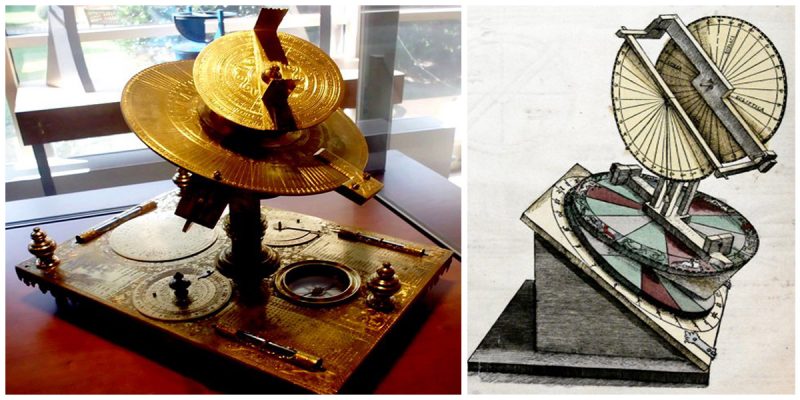The “torquetum” or “turquet” is a complex and sophisticated Medieval instrument, first described by the ancient Greek scientist Ptolemy, used to measure the three sets of astronomical coordinates: horizon, equatorial, and ecliptic.
It also provided a mechanical means to interconvert between these sets of coordinates without the use of calculations and to demonstrate the relationships of these coordinate sets. In a sense, the Torquetum is an analog computer.
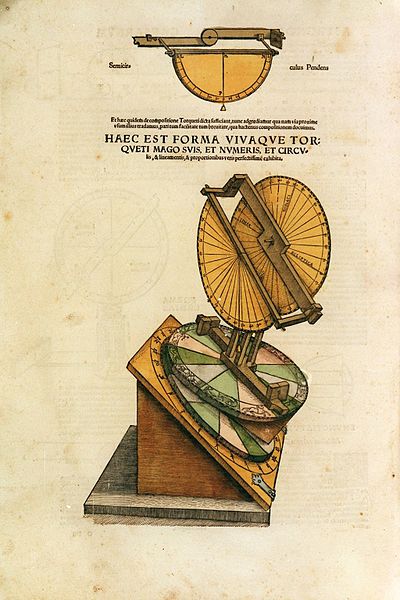
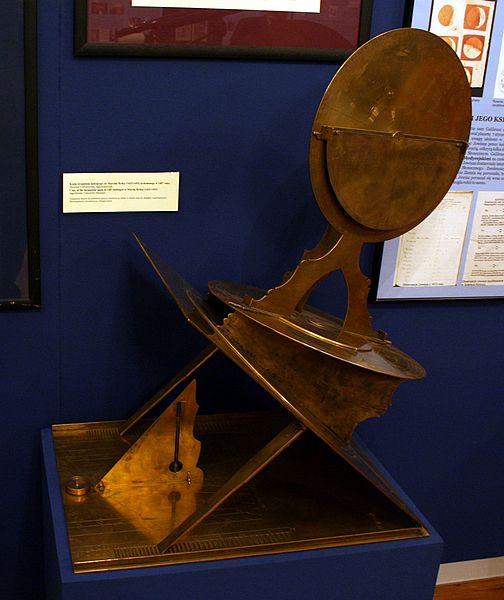
The first torquetum is thought to have been built in the 12th century or 13th century by Jabir ibn Aflah (Geber), though the few survived examples date from the 16th century. The first known accounts of the torquetum are those of Bernardus de Virduno in the Tractus super totum astrologium and Franco de Polonia.
Franco does appear to be the main disseminator of the instrument, since manuscript versions of his account (dated at 1284) are much more common, and other descriptions, up to the late fifteenth century, are based on Franco’s work.
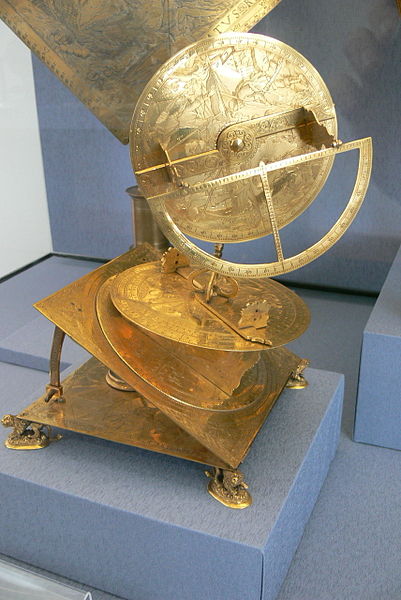
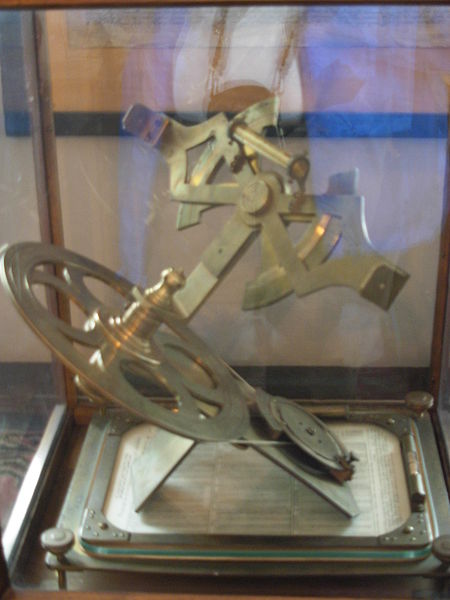
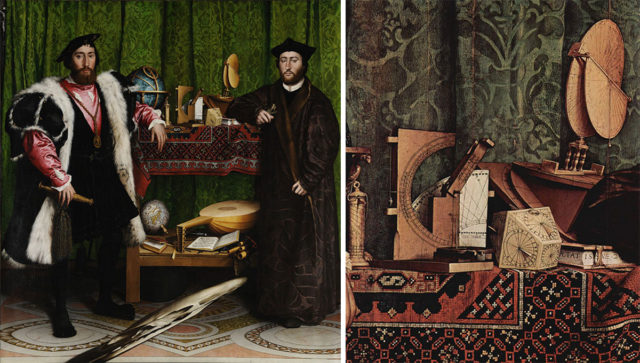
The most famous example of its usage as an analog computer to inter-convert measurements between coordinate systems without the use of tedious calculations can be found in the painting The French Ambassadors by Hans Holbien the Younger (1533).
It is placed on the right side of the table, next to and above the elbow of the ambassador’s clad in a long brown coat or robe. The painting shows many details of the inscriptions on the disk and half disk, which make up the top of this particular kind of torquetum.
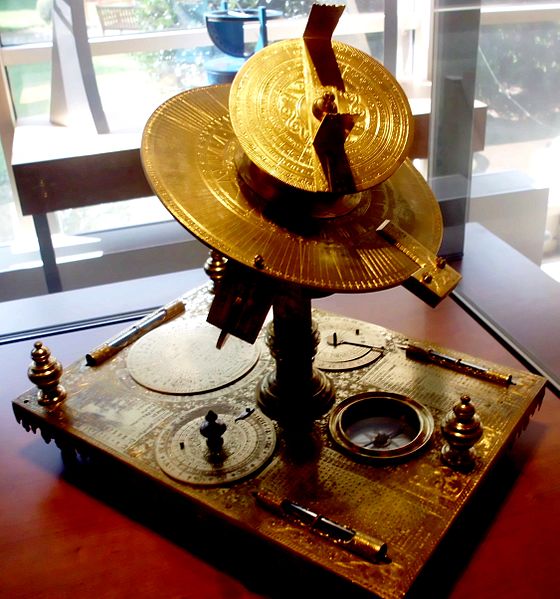
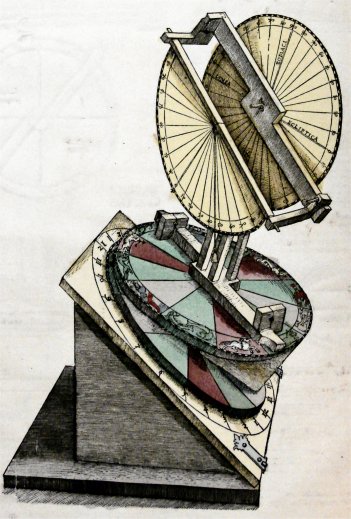
One such instrument was designed by Peter Apian of Nuremberg, one of the leading instrument makers in the early sixteenth century. It is perhaps the best-known account, and certainly the most commonly reproduced image of a torquetum. In 1540 he published his Astronomicum Caesareum, including his pioneering observations on comets, and described the basics of the instrument.
